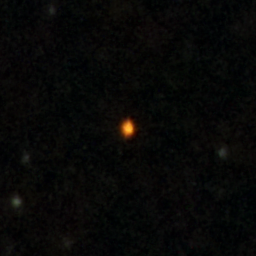Kappa Lyrae
| Observation data Epoch J2000.0 Equinox J2000.0 | |
|---|---|
| Constellation | Lyra |
| Right ascension | 18h 19m 51.70908s[1] |
| Declination | +36° 03′ 52.3691″[1] |
| Apparent magnitude (V) | 4.35[2] |
| Characteristics | |
| Spectral type | K2 III[3] |
| U−B color index | +1.17[2] |
| B−V color index | +1.14[2] |
| Astrometry | |
| Radial velocity (Rv) | -24.36[4] km/s |
| Proper motion (μ) | RA: -16.75[1] mas/yr Dec.: +41.09[1] mas/yr |
| Parallax (π) | 13.71 ± 0.56 mas[1] |
| Distance | 238 ± 10 ly (73 ± 3 pc) |
| Details | |
| Radius | 16[5] R☉ |
| Luminosity | 127.4[6] L☉ |
| Surface gravity (log g) | 2.51[7] cgs |
| Temperature | 4,638[7] K |
| Metallicity [Fe/H] | +0.13[7] dex |
| Rotational velocity (v sin i) | 5.0[4] km/s |
| Other designations | |
Kappa Lyrae (κ Lyr) is a solitary 4th magnitude star approximately 238 light years away from Earth, in the northern constellation of Lyra. It is a giant star of the spectral type K2III[3] with an effective temperature of 4,638[7] kelvins. It is cooler, yet larger and brighter, than our Sun. It is also a suspected small amplitude variable star.[9]
References
- ^ a b c d e van Leeuwen, F. (2007), "Validation of the new Hipparcos reduction", Astronomy and Astrophysics, 474 (2): 653–664, arXiv:0708.1752, Bibcode:2007A&A...474..653V, doi:10.1051/0004-6361:20078357.
- ^ a b c Mermilliod, J.-C. (1986), "Compilation of Eggen's UBV data, transformed to UBV (unpublished)", Catalogue of Eggen's UBV data. SIMBAD, Bibcode:1986EgUBV........0M.
- ^ a b Cenarro, A. J.; et al. (July 2009), "Mg and TiO spectral features at the near-IR: spectrophotometric index definitions and empirical calibrations", Monthly Notices of the Royal Astronomical Society, 396 (4): 1895−1914, arXiv:0903.4835, Bibcode:2009MNRAS.396.1895C, doi:10.1111/j.1365-2966.2009.14839.x.
- ^ a b Massarotti, Alessandro; et al. (January 2008), "Rotational and radial velocities for a sample of 761 HIPPARCOS giants and the role of binarity", The Astronomical Journal, 135 (1): 209–231, Bibcode:2008AJ....135..209M, doi:10.1088/0004-6256/135/1/209.
- ^ Pasinetti Fracassini, L. E.; et al. (2001), "Catalogue of Apparent Diameters and Absolute Radii of Stars (CADARS) - Third edition - Comments and statistics", Astronomy & Astrophysics, 367: 521–24, arXiv:astro-ph/0012289, Bibcode:2001A&A...367..521P, doi:10.1051/0004-6361:20000451.
- ^ McDonald, I.; et al. (2012), "Fundamental Parameters and Infrared Excesses of Hipparcos Stars", Monthly Notices of the Royal Astronomical Society, 427 (1): 343–57, arXiv:1208.2037, Bibcode:2012MNRAS.427..343M, doi:10.1111/j.1365-2966.2012.21873.x.
- ^ a b c d Maldonado, J.; et al. (June 2013), "The metallicity signature of evolved stars with planets", Astronomy & Astrophysics, 554: 18, arXiv:1303.3418, Bibcode:2013A&A...554A..84M, doi:10.1051/0004-6361/201321082, A84.
- ^ "kap Lyr -- Variable Star", SIMBAD Astronomical Database, Centre de Données astronomiques de Strasbourg, retrieved October 14, 2007.
- ^ Percy, J. R.; et al. (1994), "Photometric surveys of suspected small-amplitude red variables. III: An AAVSO photometric photometry survey", Astronomical Society of the Pacific, 106 (700): 611–615, Bibcode:1994PASP..106..611P, doi:10.1086/133420.

